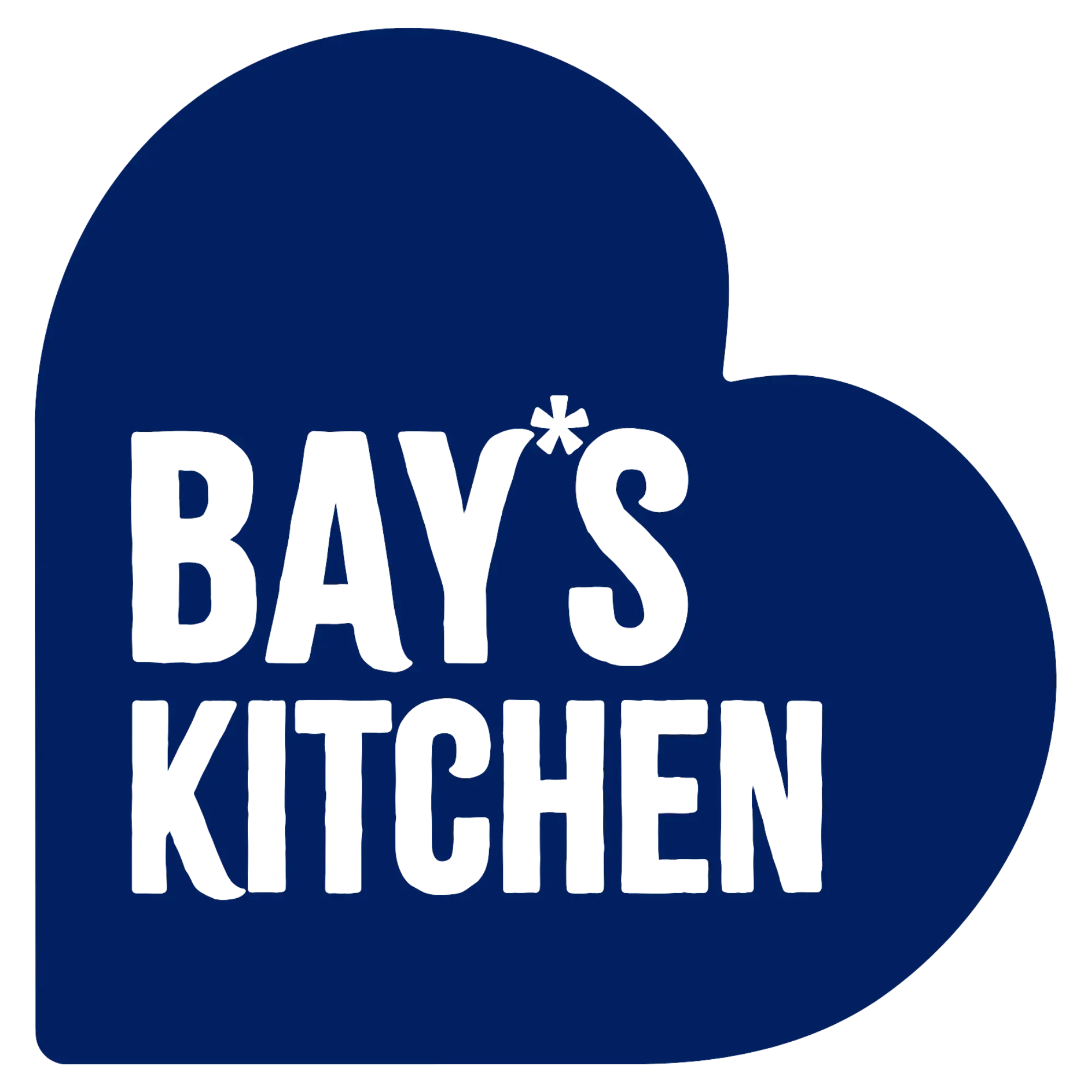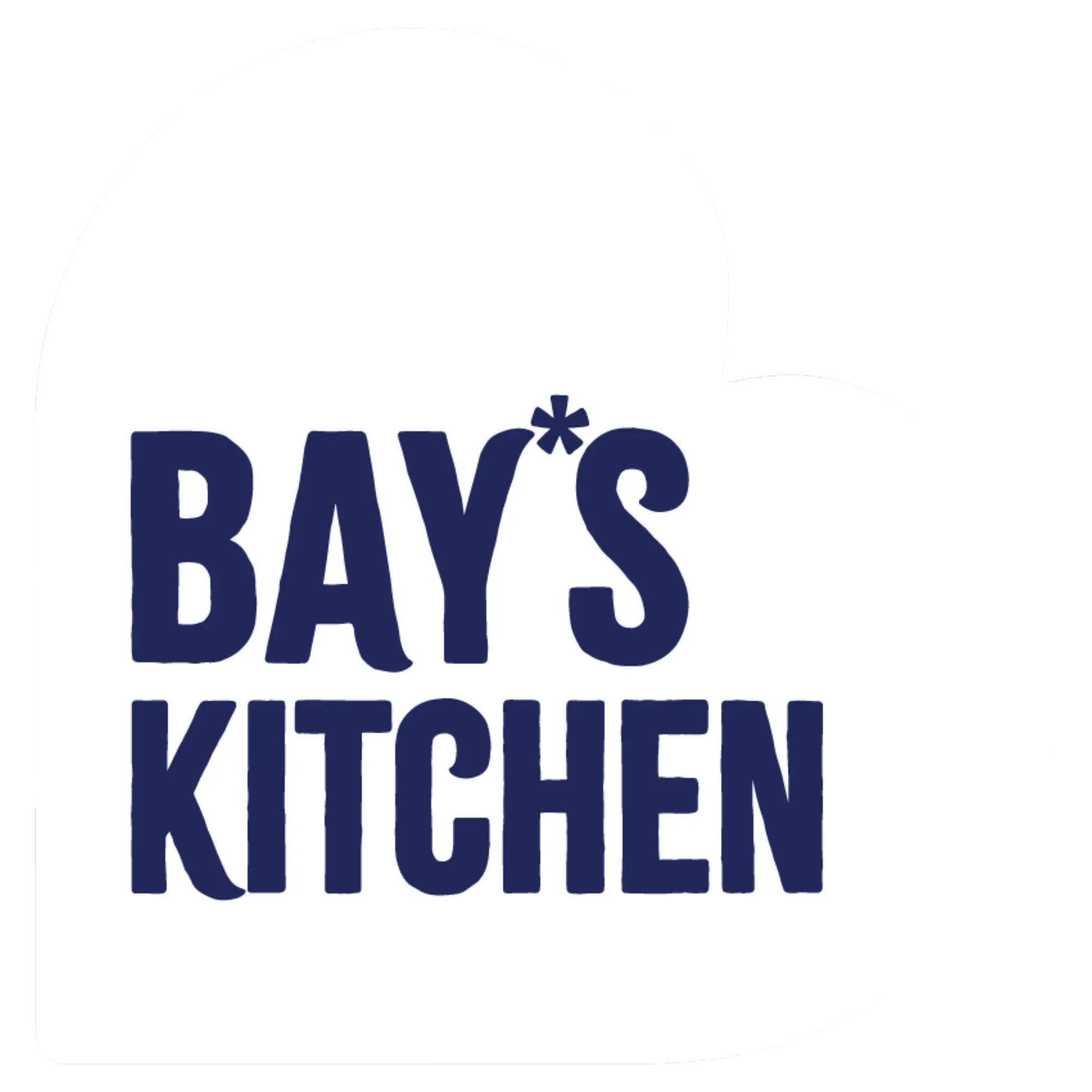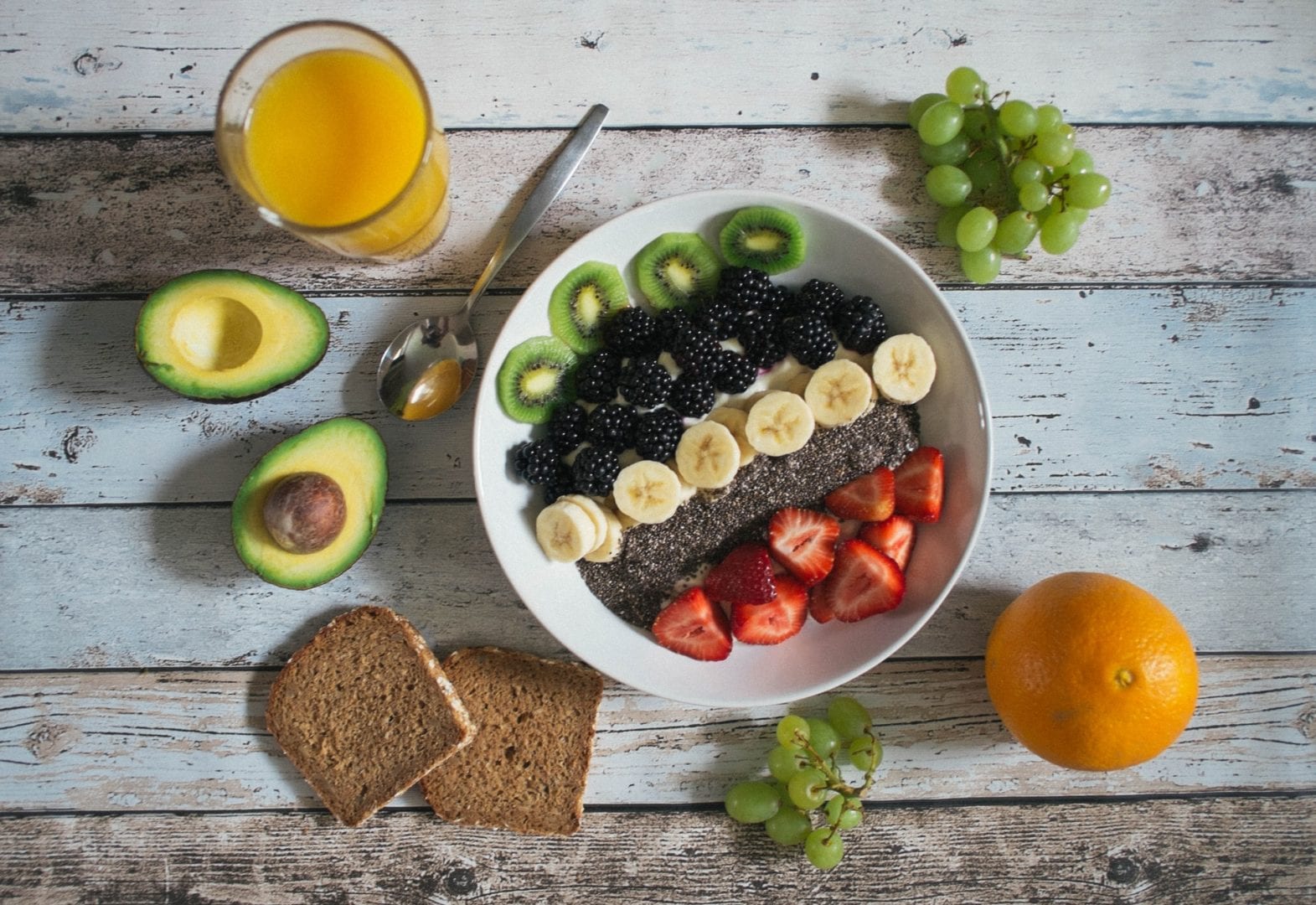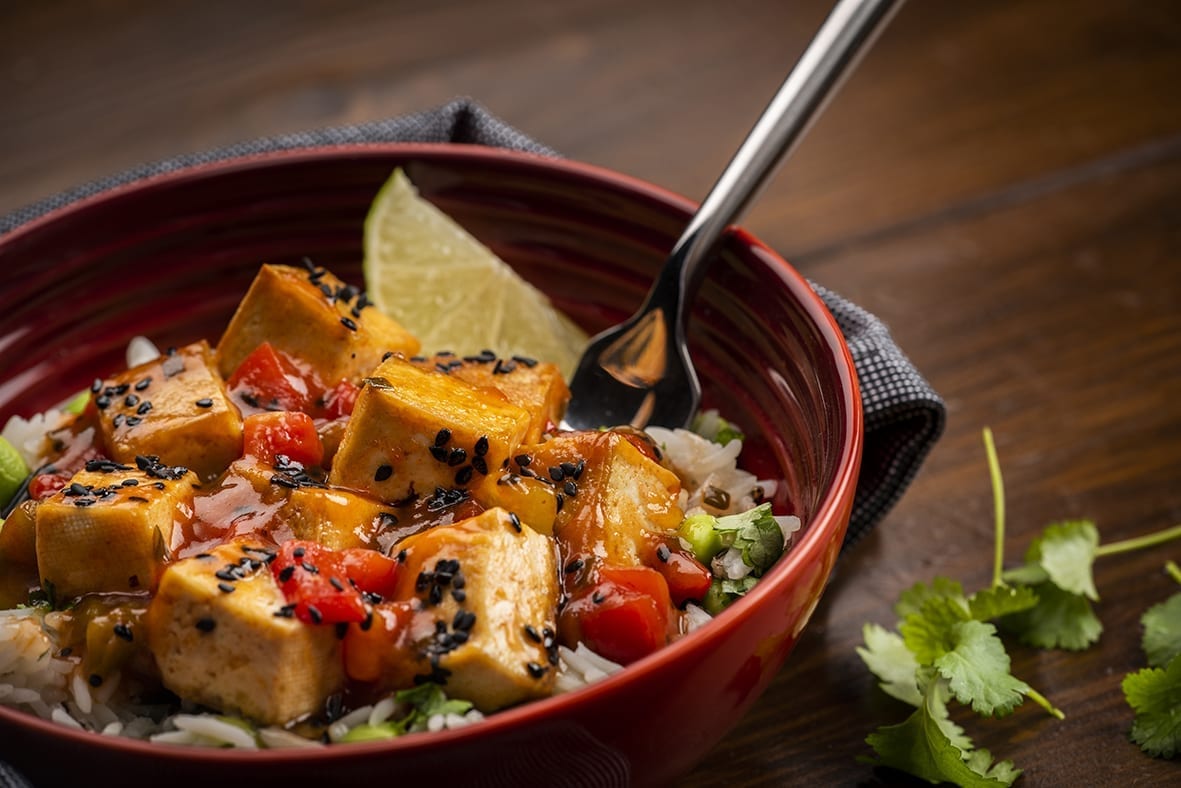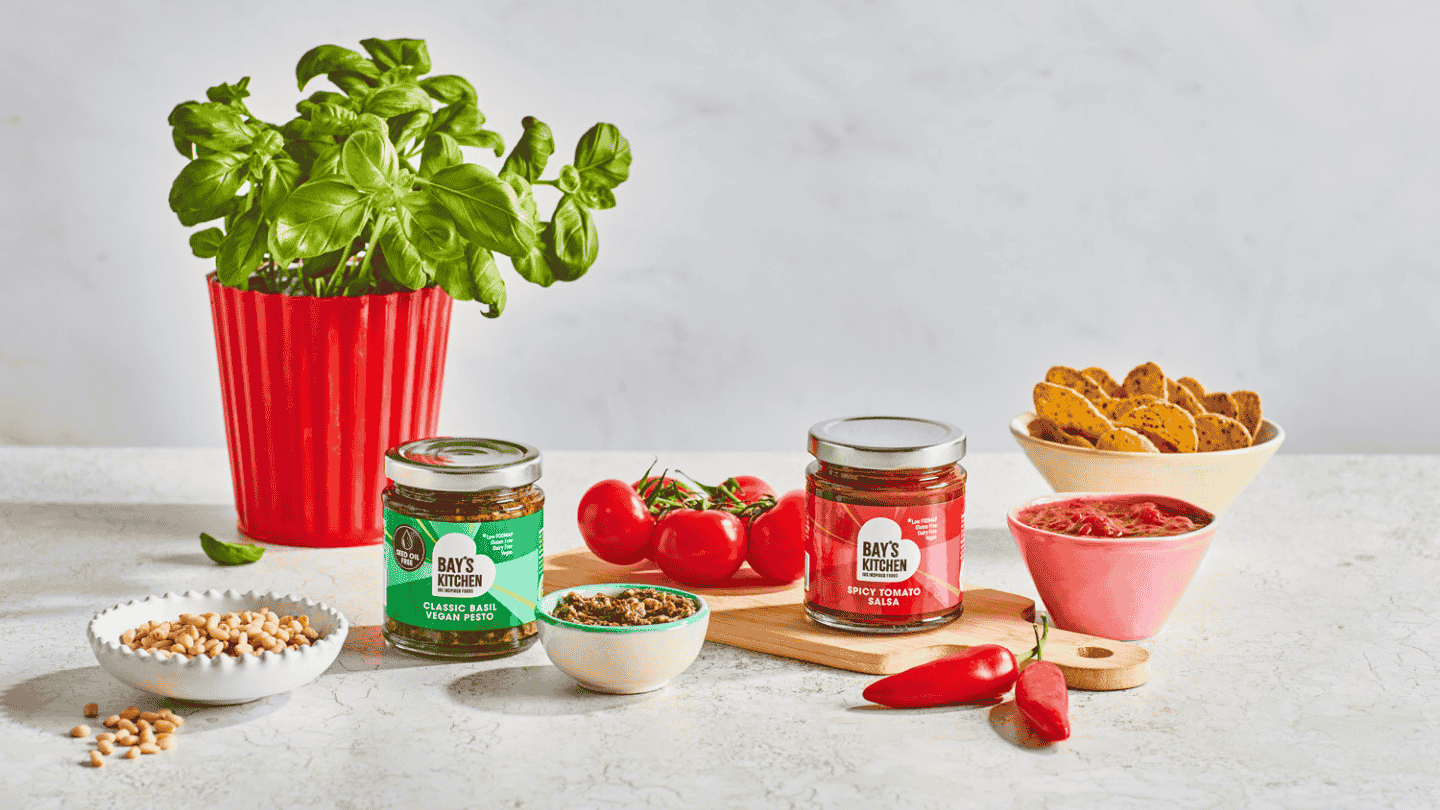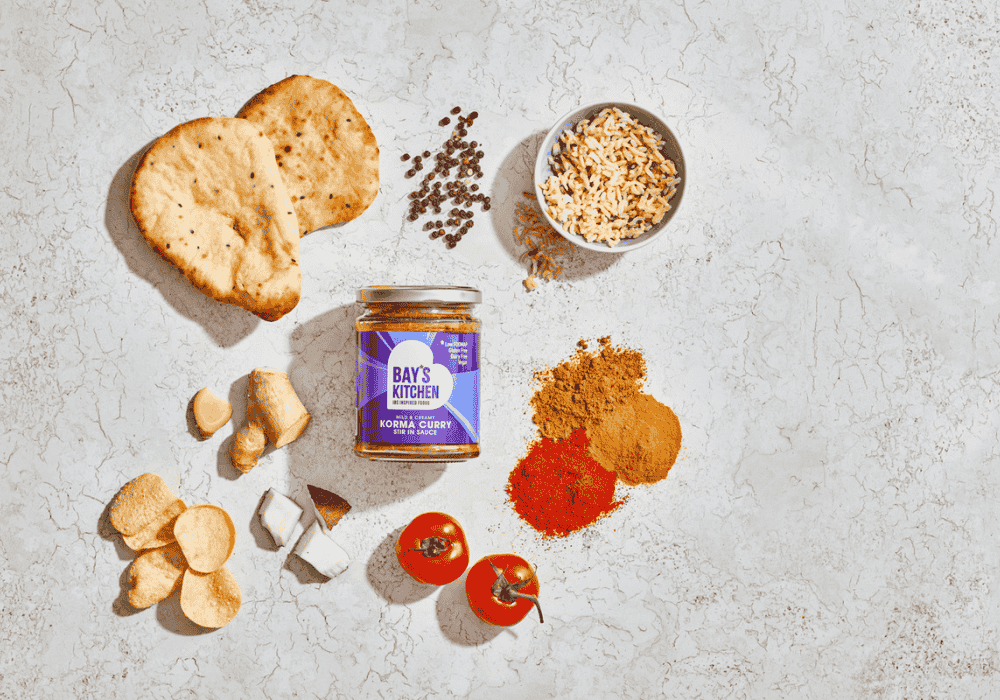If you’ve been following the gut health movement, you’ll probably have heard that a high fibre diet is beneficial for the gut and its microbes.
But what if you’ve got IBS? Is a high fibre diet still a good idea, or can it make your symptoms worse? Here’s what you need to know…
What Is Fibre & What Does It Do?
First things first – let’s recap on some facts about fibre. Fibre is a type of carbohydrate that’s not digested or absorbed in the upper part of the gut, which means that unlike other nutrients, it passes through the gut and lands in the large intestine, or colon undigested.
Once it’s there, the bacteria living in the large intestine break down the fibre for energy (a process known as fermentation), transforming it into various gases (which you excrete as wind!) and compounds known as short chain fatty acids, which help to keep the lining of the gut healthy.
But that’s not all, fibre stimulates contractions in the gut, and bulks out stools, both of which help to prevent constipation. It helps to keep us feeling full, and also plays a role in regulating blood sugar cholesterol levels.
Where Is Fibre Found?
Fibre is found in a range of plant foods – wholegrains (which contain the entire grain, examples include wholemeal bread and wholegrain pasta) fruits, vegetables, nuts, seeds and pulses (beans, peas and lentils).
What Are the Different Types of Fibre?
Fibre can be categorised according to how fermentable and soluble it is, characteristics which determine how it behaves in the gut. By fermentable, we mean it’s capacity to be broken down by microbes, and by soluble we mean the extent to which it can dissolve in water.
Insoluble Fibre
Insoluble fibre doesn’t absorb or dissolve in water and acts a bit like a broom, sweeping waste through the gut, making our poo bulkier, and stimulating gut movement. Examples of foods rich in insoluble fibre include the skins of fruits and vegetables, nuts, seeds and high fibre grains like wholewheat and wholemeal pasta.
Soluble Fibre
Soluble fibre does hold water and forms a gel as it moves through the gut. It helps soften and normalise poo consistency, making stools easier to pass. Examples of foods rich in soluble fibre include beans and lentils, oats, nuts, seeds, and the flesh of fruits and vegetables.
Fermentable Fibres
Some types of fibre are more fermentable than others – which means they are more capable of contributing to gas production, and more likely to contribute to discomfort in IBS sensitive guts.
Highly fermentable fibres can be found in beans, lentils, onions and wheat and in cooked and cooled pasta and potato. You’ll notice some of these foods are also high in FODMAPs, as some FODMAPs are classed as fibres too.
How Much Fibre Should We Be Eating?
Current healthy eating guidelines for the general population (i.e. people without IBS) recommend that adults aim to eat 30 grams of fibre a day – this is termed a high fibre diet.
However, this isn’t necessarily a good idea for someone with IBS, as some types of fibre can aggravate symptoms like pain, gas and loose stools, so it’s important to consider your symptoms and determine what is the right level of fibre for you.
So What *Is* The Right Amount of Fibre for Someone With IBS?
Unfortunately we don’t have enough good quality evidence to say what the optimal amount of fibre is for someone with IBS, but understanding the potential effects of fibre on your IBS-type will help you decide whether adjusting your fibre intake might help.
Fibre & IBS-C (Constipation)
Constipation can be caused by numerous factors, which aren’t necessarily related to diet. For example, some people have a slow transit time – which means the muscular movements of the gut are slower than normal. If this is the case, increasing fibre is unlikely to help.
But, if there is no obvious underlying cause to your constipation, gradually increasing your fibre intake to 20-30 grams a day may help increase the frequency of your bowel movements, if your intake is currently on the low side.
It’s impossible to know how much fibre is in a food just by looking at it, so you’ll need to keep a record of everything you’re eating for a few days, and either check the back of packets of foods to see how fibre you’re consuming or use a digital food diaries like My Fitness Pal, which will calculate the fibre intake for you. Try to keep a diary for 3-5 days to get a good picture of your average intake.
Increasing Fibre Without the Gas
One of the side effects of increasing fibre intake is an increase in gas production. This is normal (it’s the microbes doing their job!) but can be uncomfortable. To avoid this, increase your fibre intake slowly. A good target is 5 grams/day each week – for example increasing from 15 grams to 20 grams and monitoring symptoms, and then making another increase a week later if you’re finding it helpful.
Choosing fibres which are less fermentable (gas forming) can help too. If you’re following a low FODMAP diet, you’ll find the tips below helpful.
Linseeds are a helpful way of boosting your fibre intake, with some evidence that they may gradually relieve constipation. Start with half a tablespoon a day and gradually increase to a maximum of two tablespoons a day.
Always drink a small glass of fluid or water alongside linseeds to help them do their job – and don’t forget to drink plenty of fluid when increasing your fibre intake more generally, as you could end up more constipated if you don’t.
Tips For Increasing Fibre On A Low FODMAP Diet
- Choose oats for breakfast. A serving is half a cup (50g).
- Snack on low FODMAP fruit or add to breakfast; bananas, raspberries, rhubarb, kiwifruit, oranges, strawberries, blueberries, pineapple, passion fruit and oranges.
- Include 2 portions of low FODMAP vegetables with your meals; carrot (skin on), green beans, potato (skin on), spinach, courgettes, aubergine, peppers are all low FODMAP
- Check food labels when buying low FODMAP bread and cereal products. Compare the ‘per 100g’ column to find higher fibre options. A high fibre option will contain 6 grams or more of fibre per 100 grams. Examples include quinoa, brown rice, gluten free multigrain bread, rice bran, oat-bran, and porridge (oats).
- Add canned lentils/ canned chickpeas to a casserole/salad. A ‘green’ or low FODMAP serve is 45 grams of canned chickpeas or ½ cup of canned lentils. Rinse the canned lentils/chickpeas well before use
- Snack on almonds. A ‘green’ or low FODMAP serve of almonds is considered 10 nuts
- Add flaxseeds to your breakfast cereal or a low FODMAP yoghurt
- Snack on oatcakes with a little peanut butter
Fibre and IBS-D (Diarrhoea)
Since fibre can speed up the movement of food through your gut, you might benefit from reducing some types of fibre if you are prone to loose stools. It’s also worth ruling out any possible underlying causes of chronic diarrhoea, such as bile acid malabsorption, which can often be mistaken for IBS-D. Chat to your G.P. if you’re experiencing diarrhoea several times a day which is watery, foul smelling, greasy or yellow in appearance.
We don’t have any good evidence to suggest what the ‘ideal’ amount of fibre is for someone with IBS-D – it’s likely that everyone will have a different level of tolerance to fibre – so you’ll need to work out what yours is.
As a guide, a low fibre diet is usually described as one with around 10 grams of fibre, and a high fibre diet is one providing about 30 grams a day. You might find somewhere inbetween is the right level for you.
A helpful place to start is by keeping a food diary and working out how much fibre you’re having on a daily basis – you’ll then be able to assess whether it might be helpful to decrease your intake, or change the type of fibre you’re choosing.
Insoluble fibre is the one to think about reducing if you have IBD-D. If you’re having lots of wholegrain bread and high fibre cereals, nuts, seeds, raw vegetables and fruits with skins, it’s worth changing things up. This might mean swapping to a lower fibre cereal or bread and reducing the number of raw vegetables you eat. This can be a bit tricky to get your head around, because we’re always told that fibre is so good for us. However some types of fibre might irritate your sensitive gut, so you need to work out what your tolerance level is.
Instead, opt for more soluble fibre sources such as oats, sweet potato (minus the skin), bananas, carrots, chia seeds, and small portions of pulses as these can help normalise stool consistency.
Fibre Tips for IBS-D
- Use your food diary to calculate how much fibre you’re currently having in a day, and then try changing your fibre intake and monitoring your symptoms – remember as a guide, 10 grams is low, 30 grams is high.
- Swap wholegrain high fibre cereals for lower fibre alternatives (this might means switching to white rice, or rice krispies and white bread and pasta, or having a mix of the two)
- Learn more about fibre by comparing the amount of fibre per 100g on the back of packets – oats have 9 grams of fibre per 100 grams, rice krispies have 2 grams. Even swapping from chunky to instant oats can make a difference.
- Reduce insoluble fibre from large intakes of beans and raw vegetables, and avoid skins, pips, and peels where you can
- Avoiding lots of fibre at once – so have one to two servings of cooked vegetables with a meal rather than four – or have a small serve of oats, but don’t add nuts, seeds and fruit on top
- Well cooked vegetables and stewed fruit might be better tolerated than raw fruit and vegetables
- Halve your portion size of seeds or nuts, or try them as a nut butter or in ground form e.g. ground linseeds instead of whole linseeds
